As technology develops at a rapid pace, future inventions promise to change our lives in unusual ways. This article examines various revolutionary ideas, from advances in health care to innovations in transportation, and explores each in detail. By studying these upcoming inventions, readers can get an idea of the potential changes and improvements that await us in the future.
1. Autonomous transport systems
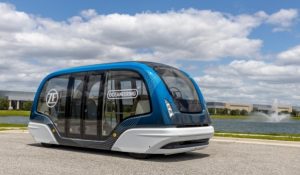
Autonomous transport systems should revolutionize the way we travel. Self-driving cars, buses, and even trucks are being developed to provide safer, more efficient, and greener transportation.
- Self-driving cars: Companies like Tesla, Waymo, and Uber are in the spotlight when it comes to developing fully autonomous vehicles. These cars use a combination of sensors, cameras and artificial intelligence to navigate roads without human intervention. The goal is to reduce traffic accidents, reduce emissions and improve traffic flow.
- Public transport: Autonomous buses and shuttles are being tested in cities around the world. These vehicles can operate on fixed routes, providing reliable and cost-effective public transport. Examples include Navya’s autonomous shuttle and EasyMile’s EZ10.
- Freight transportation and logistics: Autonomous trucks are expected to transform the logistics industry by reducing delivery times and operating costs. Companies such as Embark and TuSimple are leaders in the development of solutions for autonomous freight transportation.
The benefits of autonomous transportation systems include reducing human error, lowering operating costs, and improving traffic management. However, issues such as regulatory approval, technological reliability and public acceptance still need to be addressed.
2. Advanced robotics and artificial intelligence
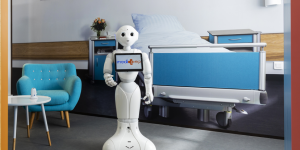
The field of robotics and artificial intelligence (AI) is rapidly developing, new applications are emerging in various sectors. These technologies have the potential to automate complex tasks, increase productivity, and improve quality of life.
- Health care: Artificial intelligence robots are being developed to assist in surgery, patient care and rehabilitation. For example, the da Vinci surgical system allows surgeons to perform minimally invasive procedures with high precision, and robotic exoskeletons such as the EksoGT help patients with limited mobility regain movement.
- Production: Advanced robots are revolutionizing manufacturing by performing tasks that are dangerous or repetitive for humans. Examples include assembly line operations, quality control systems, and automated warehouses. Companies such as FANUC and KUKA are leaders in the development of industrial robots.
- Service Industries: Service robots are used in a variety of industries, such as hotels, restaurants, and retail stores. These robots can assist with tasks such as cleaning, customer service, and inventory management. SoftBank’s Pepper robot and Savioke’s Relay robot are prime examples.
The integration of artificial intelligence and robotics into everyday life promises to increase efficiency, reduce costs and increase safety. However, ethical considerations, job displacement and the need for robust cyber security measures remain important challenges.
3. Sustainable energy solutions

Sustainable energy solutions are critical to combating climate change and ensuring a greener future. Innovations in the field of renewable energy, energy storage and increasing efficiency contribute to the transition to a sustainable energy system.
- Solar energy: Advances in photovoltaic technology are making solar panels more efficient and affordable. Innovations such as perovskite solar cells and solar paint promise to further improve the efficiency of capturing solar energy. Companies like First Solar and SunPower are leaders in solar technology.
- Wind energy: Wind turbines are becoming more and more efficient and are able to generate energy even at lower wind speeds. Offshore wind farms, such as those developed by Ørsted and Siemens Gamesa, harness the power of ocean winds to generate large amounts of electricity.
- Energy storage: Energy storage technologies are important for balancing supply and demand in renewable energy systems. Innovations in battery technology, such as Tesla’s Powerwall and solid-state batteries, are improving storage capacity and efficiency. In addition, technologies such as hydraulic storage pumps and flywheels are being explored for large-scale energy storage.
Sustainable energy solutions are essential for reducing greenhouse gas emissions and mitigating the effects of climate change. Continued innovation and investment in this industry is essential for a sustainable future.
4. Biotechnology and genetic engineering
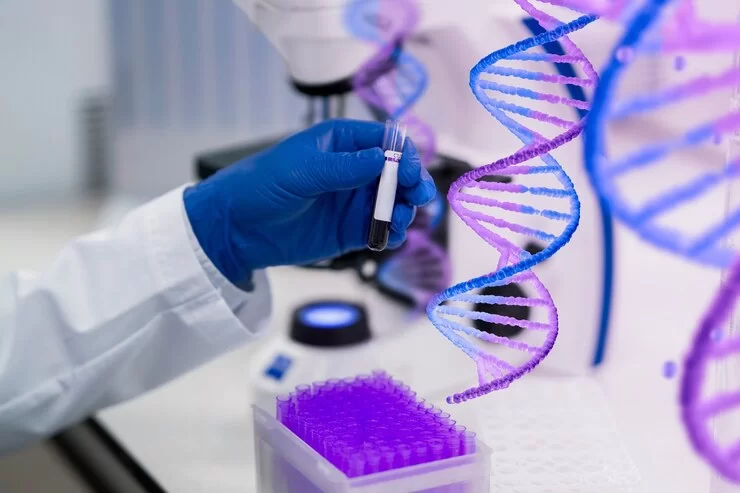
Biotechnology and genetic engineering are opening new horizons in medicine, agriculture and environmental science. These technologies have the potential to revolutionize health care, increase food production, and solve environmental problems.
- CRISPR-Cas9: This gene editing technology allows scientists to modify DNA with unprecedented precision. Its applications include the development of disease-resistant crops, the creation of gene therapy to treat hereditary diseases, and the engineering of microorganisms to clean up the environment. Companies such as Editas Medicine and CRISPR Therapeutics are pioneering the use of CRISPR in medicine.
- Personalized medicine: Advances in genomics and biotechnology enable the development of personalized medicine adapted to a person’s genetic makeup. This approach can increase the effectiveness of treatment and reduce side effects. Companies such as 23andMe and Helix offer genetic testing services to consumers.
- Synthetic biology: Synthetic biology involves the development and construction of new biological parts and systems. Examples include the creation of biofuels from algae, the development of new materials from biological sources, and the engineering of microbes for the production of pharmaceuticals. Companies like Ginkgo Bioworks and Zymergen are at the forefront of synthetic biology innovation.
The potential of biotechnology and genetic engineering to solve global problems is enormous. However, ethical considerations, regulatory frameworks and public acceptance are critical factors that require careful management.
5. Quantum computing

Quantum computing is poised to revolutionize computing, solving complex problems that are currently intractable for classical computers. This technology uses the principles of quantum mechanics to perform calculations at unprecedented speeds.
- Quantum bits (qubits): Unlike classical bits, which can be either 0 or 1, qubits can exist in several states at the same time. This property, known as superposition, allows quantum computers to perform many calculations simultaneously. Companies such as IBM, Google and D-Wave are leaders in the development of quantum computers.
- Application: Quantum computing has the potential to revolutionize fields such as cryptography, materials science, and drug development. For example, quantum computers can break current encryption methods, leading to the development of new, more secure encryption methods. In materials science, quantum modeling can lead to the discovery of new materials with unique properties.
- Challenges: Despite its potential, quantum computing faces significant technical challenges, such as maintaining qubit coherence and reducing error rates. In addition, the creation of a scalable quantum computer remains a major obstacle.
Quantum computing promises to transform numerous industries by providing computing power that far surpasses today’s. Further research and development is needed to reveal its full potential.
6. Augmented and virtual reality

Augmented reality (AR) and virtual reality (VR) technologies are transforming the way we interact with the digital world. These technologies are used in games, education, health care and other areas.
- Augmented reality: AR overlays digital information on the real world, enhancing our perception and interaction with our environment. Applications include navigation aids, educational tools and maintenance assistance. Companies like Microsoft (HoloLens) and Magic Leap are developing advanced augmented reality devices.
- Virtual reality: VR immerses users in a fully digital environment, providing an experience that is indistinguishable from reality. It is used in games, virtual tourism and educational simulations. Leading VR platforms include Oculus (Meta), HTC Vive and Sony PlayStation VR.
- Mixed reality: Mixed reality (MR) combines elements of both AR and VR, allowing users to interact with digital objects in a real environment. This technology is used in areas such as design, engineering and healthcare. Companies like Microsoft and Varjo are at the forefront of augmented reality development.
Augmented and virtual reality technologies improve the user experience and create new opportunities for interaction and learning. The constant development of hardware and software facilitates the implementation of these technologies in various industries.
7. Space exploration and colonization
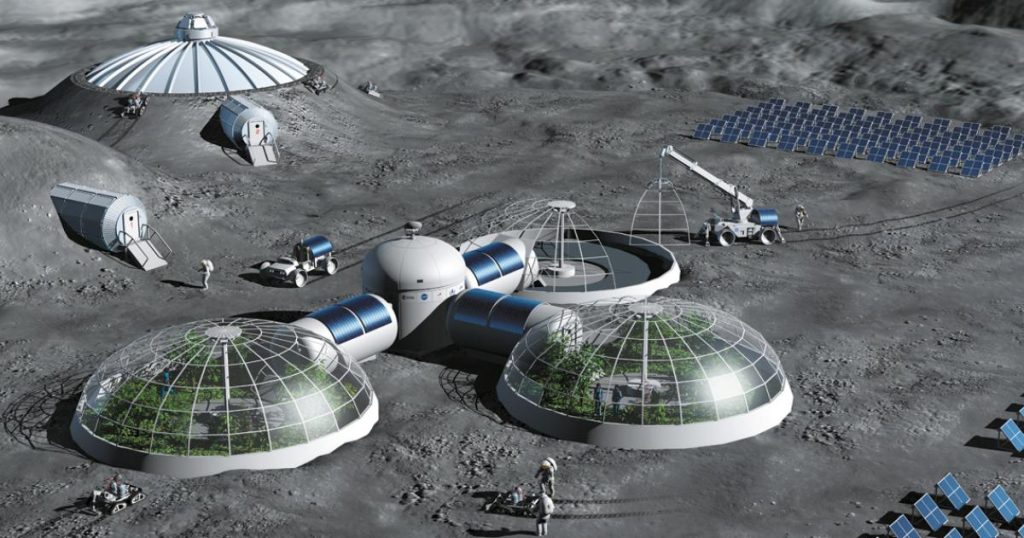
Space exploration and colonization are becoming increasingly realistic with the development of rocket technology, space habitats, and resource utilization. These efforts are aimed at expanding humanity’s presence beyond Earth and exploring new frontiers.
- Rocket technologies: Reusable rockets like SpaceX’s Falcon 9 and Blue Origin’s New Shepard are lowering the cost of space travel and making frequent launches more practical. These achievements pave the way for ambitious missions, including manned flights to Mars.
- Space habitats: Creating sustainable habitats for long-duration space missions is a key challenge. Concepts such as NASA’s Lunar Gateway and SpaceX’s Starship are being developed to support human life in space. These habitats will provide the necessary infrastructure for scientific research and potential colonization.
- Use of resources: In situ resource utilization (ISRU) involves the use of local resources, such as lunar or Martian regolith, to support space missions. This approach reduces the need to transport materials from Earth and increases the stability of the mission. Examples include extracting water from lunar ice and using it for life support and fuel production.
Space exploration and colonization have the potential to answer basic scientific questions, provide new opportunities for resource utilization, and ensure the long-term survival of humanity. Achieving these goals requires continued investment and cooperation.
8. Technologies in the field of health care
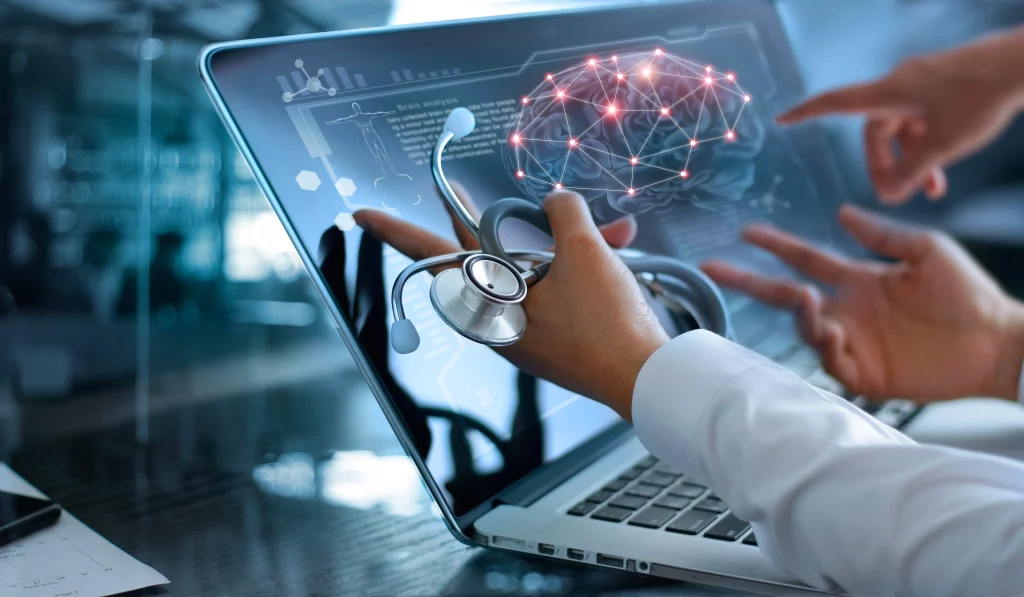
Advances in healthcare technology improve diagnosis, treatment and patient care. Innovations in medical equipment, telemedicine and health monitoring are transforming the healthcare landscape.
- Telemedicine: The development of telemedicine makes health care more accessible and convenient. Virtual consultations, remote monitoring and telemedicine platforms allow patients to receive medical care without visiting a medical facility. Companies such as Teladoc and Amwell are leading providers of telemedicine services.
- Wearable health devices: Wearable devices such as smart watches and fitness trackers help people monitor their health in real time. These devices can track vital signs, physical activity and sleep patterns. Examples include Apple Watch, Fitbit, and Garmin.
- Medical imaging: Advances in medical imaging technologies such as MRI, CT, and ultrasound are increasing diagnostic accuracy and enabling early disease detection. Innovations such as portable ultrasound devices and AI-based image analysis are making these technologies more accessible and effective.
Integrating technology in health care technology improves patient outcomes, reduces health care costs, and improves the overall quality of care. Continued innovation and adoption of these technologies is critical to the future of healthcare.
9. Smart cities
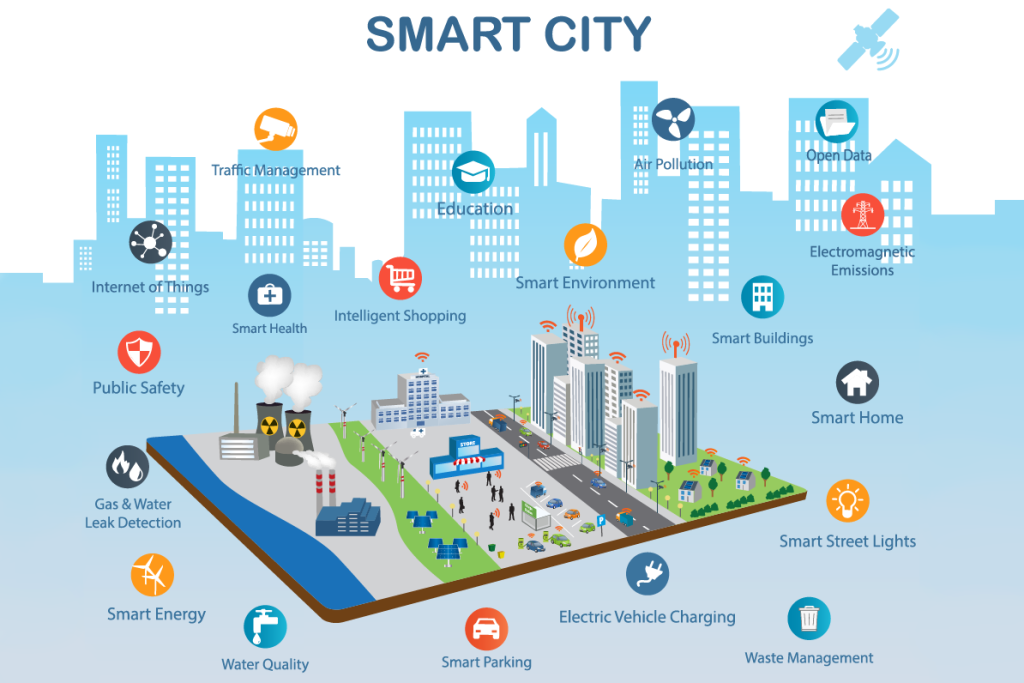
Smart cities use technology to improve city life by improving infrastructure, services and sustainable development. These cities use data and communication to optimize various aspects of urban life.
- Infrastructure: Smart cities implement intelligent infrastructure such as “smart” networks, “smart” lighting and “smart” transportation systems. These systems use sensors and data analytics to improve efficiency and reduce resource consumption. Examples are the pilot projects of “smart” street lighting in Barcelona and the “smart” electricity grid in Amsterdam.
- State services: Smart city initiatives aim to improve public services such as waste management, water supply and public safety. Technologies such as IoT-enabled trash cans and smart water meters are helping cities manage resources more efficiently. Examples are Singapore’s Smart Nation initiative and Copenhagen’s Smart Waste Management System.
- Sustainability: Smart cities prioritize sustainable development by implementing green technologies and promoting environmentally friendly practices. This includes initiatives such as green building certification, urban green areas and the implementation of renewable energy sources. Cities like Vancouver and San Francisco are leaders in sustainable development.
The development of “smart” cities is transforming urban life, making cities more efficient, sustainable and livable. Cooperation between governments, businesses and citizens is essential for the successful implementation of smart city initiatives.
10. Solutions for renewable energy storage

Efficient energy storage solutions are critical to the widespread adoption of renewable energy sources. Innovations in battery technology and other storage methods are solving the problem of the instability of renewable energy.
- Lithium-ion batteries: Lithium-ion batteries are the most widely used energy storage solution due to their high energy density and efficiency. Improvements in battery chemistry and manufacturing are lowering costs and increasing performance. Companies such as Tesla and LG Chem are leaders in the development of modern lithium-ion batteries.
- Solid-state batteries: Solid-state batteries use a solid electrolyte instead of a liquid one, which provides higher energy density and increased safety. These batteries are being developed for use in electric vehicles and network drives. Companies like QuantumScape and Solid Power are pioneers in solid-state battery technology.
- Alternative storage methods: Other energy storage technologies, such as hydro storage, compressed air energy storage, and thermal energy storage, are being explored for large-scale applications. These methods provide additional opportunities for storing excess renewable energy and ensuring the stability of the power system.
The development of renewable energy storage solutions is of great importance for the transition to a sustainable energy system. Continuous research and development is necessary to overcome technical problems and improve the efficiency and availability of these technologies.
11. Internet of Things (IoT)
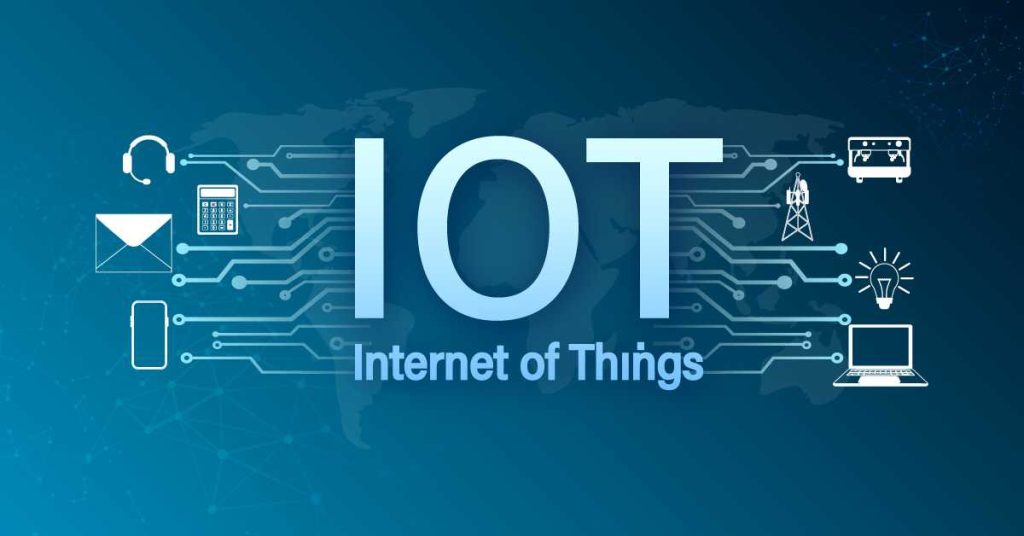
The Internet of Things (IoT) connects devices and systems, allowing them to communicate and interact with each other. IoT applications span various industries, increasing efficiency, security, and convenience.
- Smart homes: IoT devices are turning homes into “smart homes” where appliances, lighting, security systems and climate control can be controlled remotely. Examples include smart thermostats like Nest, smart speakers like Amazon Echo, and smart security cameras like Ring.
- Industrial IoT: In industrial settings, IoT improves operational efficiency, predictive maintenance and security. Sensors and connected devices provide real-time data on equipment performance and environmental conditions. Companies such as GE and Siemens are leaders in implementing industrial IoT solutions.
- Internet of things in healthcare: IoT devices in healthcare improve patient monitoring, diagnosis and treatment. Wearable health monitors, connected medical devices and remote monitoring systems allow continuous collection of health data. Examples include glucose monitors for diabetes control and connected inhalers for asthma patients.
The proliferation of IoT devices is creating a more interconnected world, with significant benefits for various sectors. However, ensuring data security and privacy remains a challenge that needs to be addressed.
12. Nanotechnology
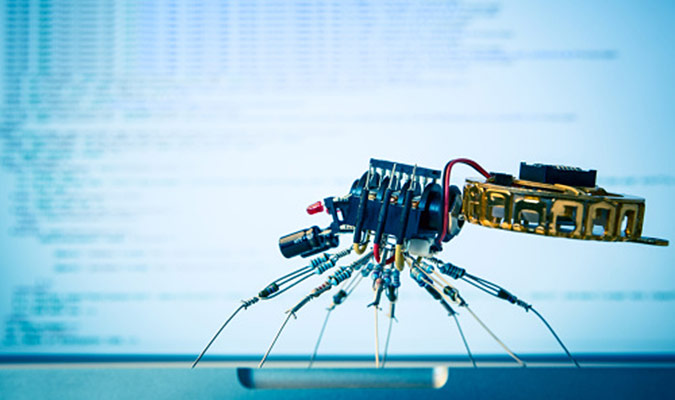
Nanotechnology involves the manipulation of matter at the nano-level to create new materials and devices with unique properties. This technology is used in medicine, electronics, energy and ecology.
- Medical applications: Nanotechnology is used to develop targeted drug delivery systems, diagnostic tools, and regenerative medicine. For example, nanoparticles can deliver drugs directly to cancer cells, reducing side effects and increasing the effectiveness of treatment. Companies such as Nanospectra Biosciences and BIND Therapeutics are pioneers in nanomedicine.
- Electronics: Nanotechnology is increasing the performance of electronic devices, allowing the creation of smaller, faster and more efficient components. Applied applications include nanoscale transistors, memory devices, and sensors. Companies such as IBM and Intel are at the forefront of nanotechnology research in electronics.
- Energy: Nanotechnology increases the efficiency of renewable energy systems and energy storage solutions. For example, nanomaterials are used to create more efficient solar cells and batteries. Research institutions such as MIT and Stanford University are leaders in nanotechnology for energy applications.
Nanotechnology has the potential to revolutionize various industries, offering innovative solutions to complex problems. To fully realize the potential of this transformative technology, constant research and development is necessary.
Conclusion
The future of technology is full of innovative ideas and inventions that promise to change our world. From autonomous transportation systems to advanced healthcare technologies, these advances open up exciting opportunities to improve our lives and solve global problems. As we continue to research and develop these technologies, it is important to consider the ethical, regulatory and social implications to ensure that their benefits are realized in a responsible and sustainable manner.